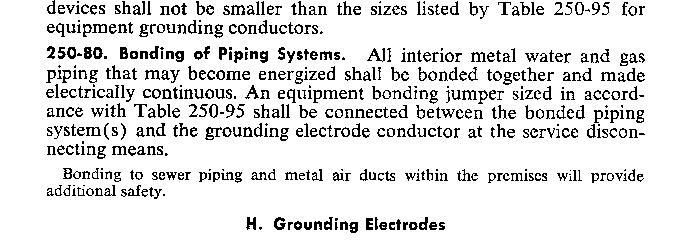What would justify bonding two pieces or metal pipes together?
If the metal pipes in question are part of a metal water piping system (and I am not referring to 6" pieces of metal pipe:roll
The verbiage of the ICC Plumbing Code calls the potable water one system also. Are you saying that the inspector should require the electrician to ensure continuity of the metal piping system? AT what lengths should the inspector stop requiring the electrician to bond? At what length does a piece of pipe become a system? Which code section requires continuity?
There is no specific length of metal water piping mentioned in the NEC that automatically qualifies said piping as a "system". That being said, I have yet to witness an installation where the plumber has willy-nilly decided to switch back and forth between plastic and metal to build the "system". This could very well happen but it would be out of the ordinary in this neck of the woods.
Got a water heater in the cabinet under the sink with a short piece of copper before the supply line to the sink. Does this hot water system need to be bonded?
IMHO, a nipple, as you have described, does not constitute a metal piping system and no bonding would be required.
How about a water heater that supplies all the requisite fixtures in a home with hot water and the piping is all metallic AND happens to be electrically isolated from the metallic cold water piping, where the electrical bond is made, are you saying that the NEC does not require the hot water piping to be bonded in this example?
Pete


